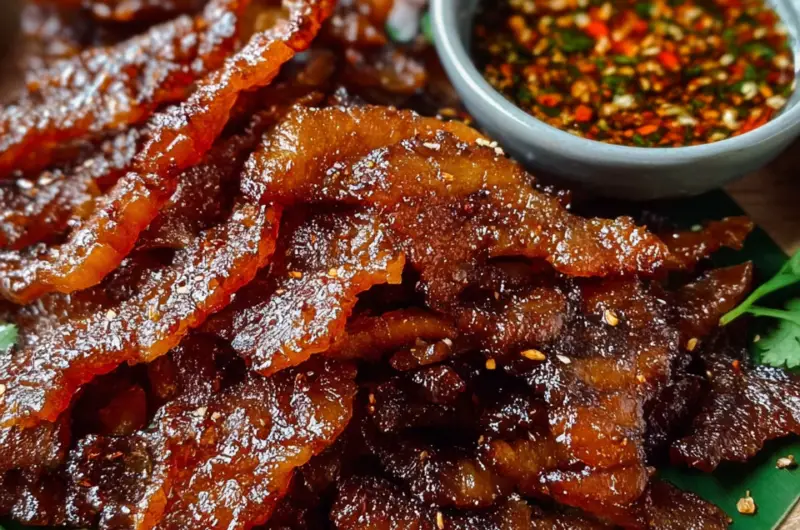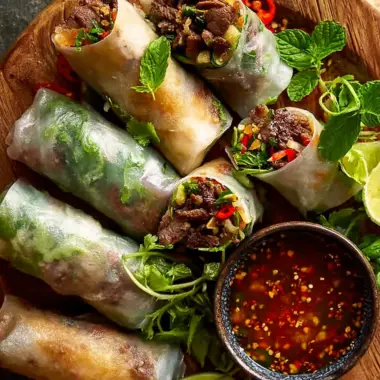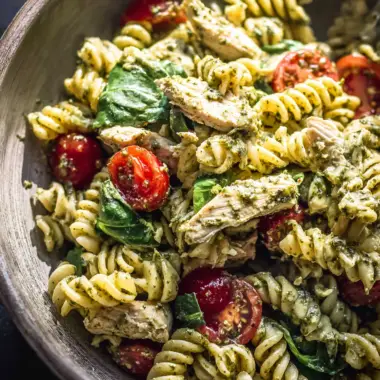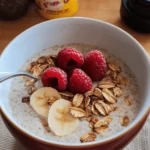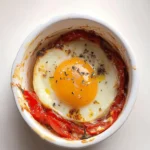Origin and Cultural Background of Thai Pork Jerky
Thai Pork Jerky, or “Moo Dad Deaw” (หมูแดดเดียว), is a traditional Thai dish that holds a special place in many households throughout Thailand. The name directly translates to “single sun-dried pork,” referring to the traditional method of drying marinated pork under the intense Thai sun before lightly frying it. This drying technique originates from the country’s need to preserve meat before refrigeration was widely available. Over time, this preservation method evolved into a beloved street food and homemade snack.
In rural areas of Thailand, it’s common to see pork strips laid out on bamboo trays in the sun during the morning hours. The goal is to partially dry the meat so that it retains a chewy interior while forming a lightly cured exterior that crisps up beautifully when fried. Thai Pork Jerky is often eaten with sticky rice and accompanied by “nam jim jaew,” a spicy and tangy dipping sauce made from roasted chili flakes, lime juice, and fish sauce.
Why Thai Pork Jerky Stands Out
Unlike Western-style jerky, which is fully dehydrated and often tough, Thai Pork Jerky offers a unique dual texture. It’s chewy yet tender, crisp yet succulent. The balance of sweet, savory, and umami flavors from soy sauce, fish sauce, and sugar makes this snack highly addictive and satisfying.
Another reason this recipe stands out is its versatility. It works perfectly as a main dish, side, snack, or even party appetizer. It’s also a great way to use economical cuts of pork like shoulder or butt, transforming them into a gourmet treat with minimal effort and maximum flavor.
Flavor Profile and Texture
The marinade is the key to the deep, rich flavor of Thai Pork Jerky. Fish sauce gives it a briny umami depth, soy sauce adds saltiness and color, sugar provides sweetness and helps caramelize during frying, and garlic brings a bold aromatic note. Optional additions like whiskey or sesame seeds add layers of complexity.
The texture is unlike any other jerky. Thanks to the brief sun-drying period, the meat is neither fully dehydrated nor raw—just firm enough to develop a slightly chewy bite but tender enough to enjoy easily. The final frying step crisps the outside while locking in moisture inside, delivering a satisfying crunch with every mouthful.
Health Benefits and Nutritional Highlights
While jerky is often considered indulgent, this Thai version offers some surprising health benefits when consumed in moderation. Pork is an excellent source of protein, which supports muscle repair and growth. It also contains important nutrients like B vitamins (especially B1, B6, and B12), zinc, selenium, and iron.
Making this dish at home allows full control over the ingredients, helping avoid excess preservatives and sodium typically found in store-bought jerky. Additionally, using lean pork cuts reduces fat content, and shallow pan-frying uses less oil compared to deep-frying.
You can even adapt this recipe for an air fryer, which reduces oil usage even more while maintaining the jerky’s signature crispiness.
Ideal for Meal Prep and On-the-Go Snacking
Thai Pork Jerky is excellent for meal prep. You can marinate and sun-dry it in batches, then store it in the fridge or freezer for later frying. Once cooked, it stores well in airtight containers and makes a convenient grab-and-go protein snack for busy days, hiking trips, or lunchboxes.
Pairing it with sticky rice or rice noodles makes it a complete meal. You can also slice it thin and add it to salads, wraps, or rice bowls for added flavor and protein.
Perfect for Entertaining and Sharing
Because it’s finger food-friendly, Thai Pork Jerky is ideal for entertaining. Its sweet-savory flavor profile is universally appealing, making it a hit at parties, potlucks, or casual get-togethers. You can prepare it in advance and serve it warm or at room temperature.
Want to impress your guests with an international flair? Serve it with dipping sauces like spicy tamarind, sweet chili, or classic Thai nam jim. Add fresh cucumber slices, sticky rice, or lettuce wraps to round out the platter.
Tips for Making the Best Thai Pork Jerky
To get the best texture and flavor, slice the pork evenly—about ¼ inch thick. This ensures even drying and frying. If you cut the pork too thin, it may over-dry and become tough. Too thick, and the interior may not dry properly.
The sun-drying process is crucial. If you’re in a humid or overcast area, use a dehydrator or an oven set to the lowest temperature with the door slightly open to replicate the effect. Just remember: the goal is not to fully dehydrate, but to semi-dry.
When frying, use medium heat. High heat will cause the sugar in the marinade to burn before the pork is cooked through, while low heat might lead to soggy results. Cook in small batches to maintain even cooking and avoid overcrowding the pan.
Variations and Customizations
One of the best things about this recipe is how easy it is to personalize. Here are some delicious variations to try:
-
Spicy Thai Pork Jerky: Add chili flakes or Thai bird’s eye chili to the marinade for extra heat.
-
Lemongrass-Infused: Add finely chopped lemongrass and a splash of lime juice to brighten up the flavor.
-
Honey Glazed: Replace the sugar with honey for a richer, deeper sweetness.
-
Air Fryer Friendly: Marinate and dry the pork, then cook it in the air fryer at 180°C (350°F) for 10–12 minutes, flipping halfway through.
-
Beef Jerky Version: Substitute pork with beef for a red meat alternative using the same marinade base.
These tweaks allow you to cater to various preferences or experiment with different Thai-inspired profiles.
Why This Recipe Is So Loved in Thailand
Thai Pork Jerky isn’t just a dish—it’s a nostalgic symbol of home cooking. For many Thai people, the smell of pork drying under the sun and frying in a pan brings back memories of childhood, family gatherings, and rural life. It’s one of those comfort foods that taste like home, no matter where you are in the world.
It’s also widely accessible: the ingredients are pantry staples in many Asian households, and the preparation is simple enough for beginner cooks. Whether you’re preparing it as part of a traditional Thai meal or simply looking for a new, flavorful protein snack, Thai Pork Jerky delivers every time.
Pairing Suggestions and Serving Ideas
Traditionally, Thai Pork Jerky is served with warm sticky rice and fresh vegetables like cucumber or green papaya. It also pairs beautifully with Thai iced tea or lemongrass lemonade to offset the richness of the meat.
For a modern twist, try serving it alongside pickled carrots and daikon, adding acidity that cuts through the savory flavor. You can also tuck it into lettuce cups with a sprinkle of chopped peanuts and herbs for a Thai fusion bite.
For a more Western-style snack board, combine Thai Pork Jerky with cubes of cheese, fresh fruit, and nuts—creating a globally-inspired charcuterie experience.
Frequently Asked Questions About Thai Pork Jerky
Can I make Thai Pork Jerky without sun-drying it?
Yes! You can use a dehydrator or an oven on low heat to mimic the sun-drying effect. Just avoid fully dehydrating the meat—semi-dried is key.
How long can I store it?
Once cooked, store in an airtight container in the fridge for up to 5 days. For longer storage, freeze marinated or dried pork before frying.
What cut of pork is best?
Pork shoulder or pork butt is ideal due to its balance of fat and meat. It remains juicy while developing a crispy texture.
Is this recipe spicy?
The base version is not spicy, but it’s easy to adjust the heat by adding chili flakes or fresh Thai chilies.
Can I use chicken or beef instead?
Absolutely! The same marinade works well with beef or chicken. Adjust drying and cooking time accordingly.
Conclusion
Thai Pork Jerky is a flavorful, satisfying, and versatile dish that brings the bold tastes of Thailand into your kitchen. Whether you’re seeking a new snack to enjoy, a way to impress your guests, or a nostalgic comfort food that reminds you of Southeast Asian street markets, this recipe hits the mark. With simple ingredients, customizable flavors, and an unforgettable texture, it’s no wonder this traditional Thai favorite continues to earn fans around the world. Try it once, and it’s bound to become a staple in your home cooking rotation.

